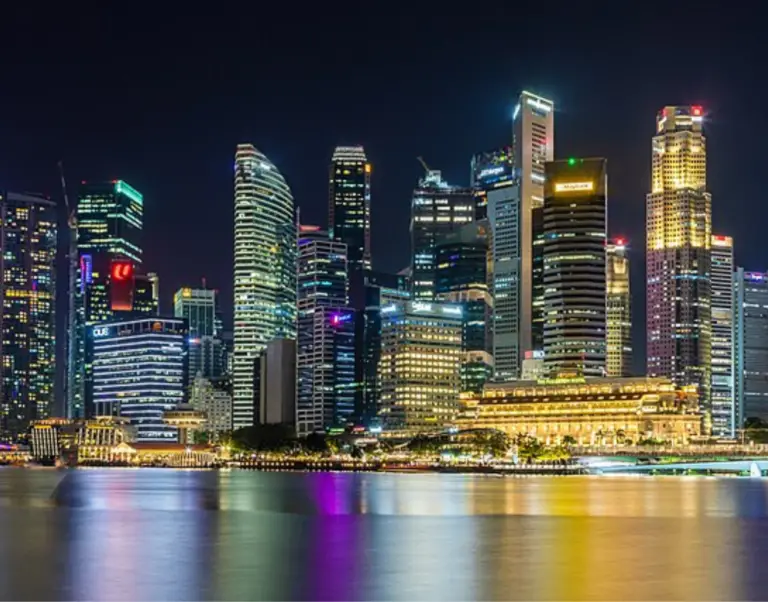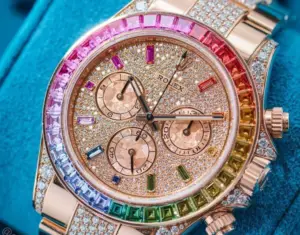If Crazy Rich Asians felt like an over-the-top fantasy, you haven’t been to Singapore. The film’s jaw-dropping wealth,private islands, sky-high penthouses, and family dynasties dripping in old money, isn’t just Hollywood magic. It’s real life.
But here’s the kicker: just a few decades ago, Singapore was the opposite of rich. In the 1960s, it was a struggling post-colonial state with high unemployment, overcrowded slums, and no natural resources. Today, it’s one of the wealthiest places on Earth, with the world’s highest concentration of millionaires per capita.
Table of Contents
So how did Singapore transform itself from a third-world fishing village to a billionaire’s paradise? More importantly, what can the rest of us learn from its rise?
From Swamp to Superpower: The Making of a Financial Empire
Singapore’s rise wasn’t accidental—it was engineered.
When the country gained independence in 1965, its founding father, Lee Kuan Yew, knew that without land, oil, or gold, Singapore’s wealth had to be built on something else: brains and business-friendly policies.
- The “No Nonsense” Economy
- Lee Kuan Yew implemented strict anti-corruption policies, making Singapore one of the cleanest business environments in the world.
- Corporate taxes were kept low (17%), encouraging multinational companies to set up regional headquarters.
- Government efficiency became legendary—permits that take months elsewhere are issued in days in Singapore.
- A Financial Safe Haven
- Over time, Singapore became the “Switzerland of Asia,” attracting global billionaires looking for stability, privacy, and favorable tax laws.
- It now manages over $5.4 trillion in assets, outpacing Hong Kong as Asia’s top wealth hub.
- Ultra-Wealthy Immigration Policy
- Singapore doesn’t just attract the rich—it handpicks them.
- The Global Investor Program (GIP) offers permanent residency to millionaires and billionaires who invest in Singapore’s economy.
The result? A nation engineered for wealth accumulation, where the rich don’t just come to visit—they come to stay.
The Playground of the Ultra-Wealthy
Money loves Singapore, and Singapore loves money. If there’s one thing the city-state has perfected, it’s the business of luxury.
1. Real Estate: The Billionaire Migration
Owning a home in Singapore isn’t just about having a place to live—it’s a status symbol.

- The Good Class Bungalows (GCBs)—a rare category of mega-mansions—start at $20 million and are so exclusive that even some billionaires can’t get them.
- The Marina Bay Sands penthouses boast panoramic views of the skyline, often selling for over $50 million.
- Foreign billionaires, from Facebook co-founder Eduardo Saverin to Chinese tycoons, have relocated their family offices to Singapore for its tax advantages.
2. Casinos, Supercars, and Private Clubs
If you ever wondered where Asia’s richest go to blow off steam, Singapore is the answer.
- The Marina Bay Sands Casino pulls in more revenue than Las Vegas casinos, thanks to its high-stakes VIP rooms where billionaires bet millions in a single night.
- Supercars are so common that seeing a Lamborghini, Ferrari, or Rolls-Royce on the streets is just another Tuesday.
- Exclusive members-only clubs like 1880 and Straits Clan cater to the ultra-elite with million-dollar memberships.
3. The F1 Grand Prix & The Luxury Scene
Singapore isn’t just a business hub—it’s a global luxury destination.
- The Singapore Grand Prix, Asia’s only night race, attracts celebrities, CEOs, and the global elite for a weekend of champagne-fueled decadence.
- The city is home to one of the world’s highest concentrations of Michelin-starred restaurants, serving everything from $500 sushi to gold-flaked steaks.
Lessons from Singapore’s Wealth Playbook
For those of us who aren’t billionaires (yet), what lessons can be learned from Singapore’s meteoric rise?
- Control Your Brand
- Singapore marketed itself as a premium, high-end destination, and now the world’s wealthiest want a piece of it.
- Whether you’re a country, a business, or an individual—how you position yourself matters.
- Make Luxury Work for You
- Unlike many nations that rely on natural resources, Singapore built an economy around luxury, finance, and exclusivity.
- The lesson? Luxury isn’t just about spending—it’s about attracting money.
- Keep the System Efficient
- Singapore’s pro-business, anti-corruption, and hyper-efficient government created an environment where wealth thrives.
- Whether in business or personal finance, efficiency is a game-changer.
Final Thoughts: A Model or a Mirage?
Singapore has successfully monetized wealth itself—from its financial hubs to its luxury lifestyle offerings. But it also raises important questions:
- Can other countries replicate this model, or is it unique to Singapore’s small size and strategic location?
- Can Singapore balance its elite appeal while ensuring the wealth doesn’t widen inequality too much?
Regardless, one thing is clear: whether you’re a billionaire, a rising entrepreneur, or just an observer, Singapore’s story is a masterclass in turning luxury into economic power.
So, next time you see a billionaire moving to Singapore, just remember: it’s not just about the tropical weather—it’s about crazy rich strategy.
Key Takeaways:
“Singapore isn’t just a city—it’s a brand. Its rise from a struggling nation to a global hub for the ultra-wealthy proves that smart policies, financial innovation, and a little bit of luxury can turn any place into an economic powerhouse. The real question is—who’s taking notes?”





